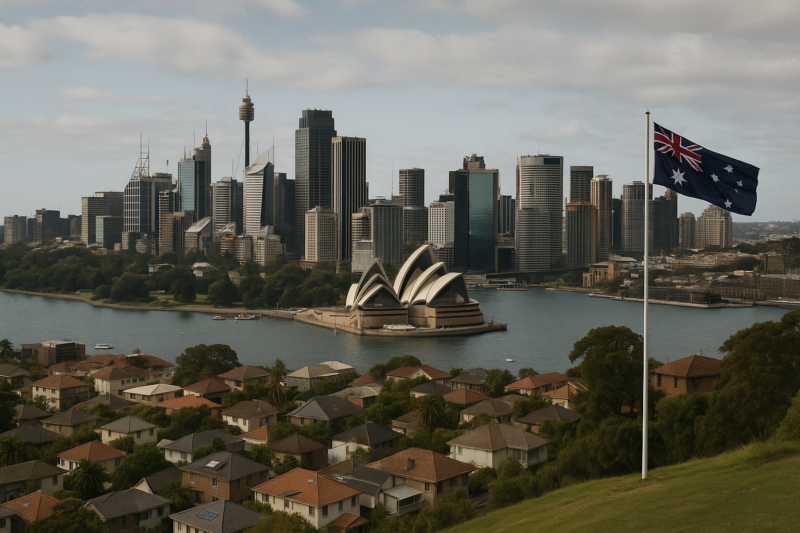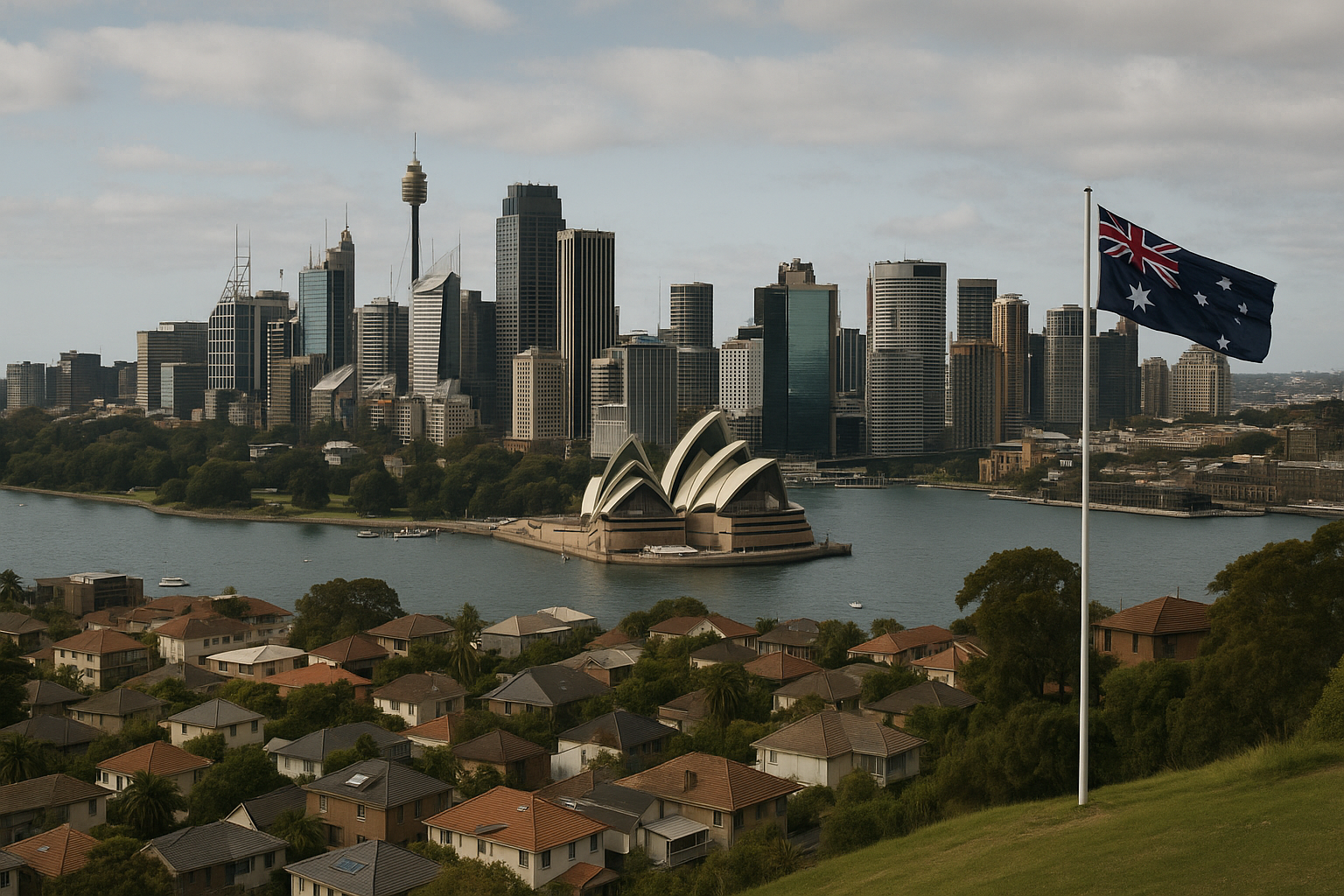
Key takeaways
Productivity growth is the main driver of living standards, wages, and sustainable economic growth.
Without improvement, Australia risks declining living standards and fewer opportunities for future generations.
Productivity challenges pose risks for wages, living standards, and fiscal sustainability.
For investors, the environment favours those with equity, multiple income streams, and a strategic approach.
Acting early in the cycle could yield significant capital growth opportunities while others hesitate.
There's a lot of talk about productivity in the news lately, isn't there?
But I've found that when economists talk about productivity, many people’s eyes glaze over.
Yet productivity growth is probably the single most important driver of our living standards.
It determines whether our wages rise, whether our economy grows sustainably, and whether future generations inherit more opportunities than we had.
Unfortunately, the Reserve Bank of Australia (RBA) has recently sounded the alarm suggesting that productivity growth in Australia has slowed significantly, and without improvement, our standard of living will fall in the years ahead.

The state of productivity in Australia
Productivity growth - essentially producing more output for each hour worked - has been in structural decline for nearly two decades.
- In the 1990s and early 2000s, labour productivity growth averaged around 2% per year.
- In the decade leading up to the pandemic, that number fell to around 1% per year.
- More recently, it has dropped further to just 0.7% per year, according to the RBA.
This may not sound dramatic, but over time, the impact is profound.
The Productivity Commission estimates that if Australia fails to lift productivity, the average full-time worker could earn $14,000 less per year by 2035 than if productivity were maintained at earlier levels.
Why productivity is struggling
Several structural forces are contributing to Australia’s weak productivity performance:
- Capital Shallowing
Our population has grown strongly, largely through migration, but business investment and infrastructure spending have not kept pace. More workers are sharing the same capital base, leaving less capital per worker to drive efficiency gains. - Deindustrialisation
Manufacturing now accounts for less than 5% of GDP. Sectors like mining and services dominate our economy, but these industries tend to deliver weaker productivity growth compared to advanced manufacturing. - Business Investment and Red Tape
Regulatory complexity, tax distortions, and limited incentives for firms to expand and innovate are all holding back investment. Many companies focus on short-term survival rather than long-term innovation. - Education, Skills, and Research
Australia invests heavily in education, but the translation of research into commercial outcomes is poor compared to other advanced economies. Skills mismatch - particularly in technology and engineering - are also slowing productivity gains. - Technology Adoption
While new technologies such as artificial intelligence hold enormous promise, Australia’s adoption rate is slower than in peer economies. Smaller businesses, in particular, lag behind in digital uptake. - Demographic Pressures
An aging population means fewer workers are supporting more retirees. This puts additional strain on government budgets and reduces the economy’s overall dynamism. And with most baby boomers leaving the workforce over the next decade, this situation is only going to get worse unless we keep importing new working-age migrants.
Implications for living standards and the economy
If you're wondering what all this has to do with you, the consequences of low productivity are wide-ranging:
- Slower Real Wage Growth – When firms produce less per hour worked, they can’t afford to pay higher wages without eroding profits or driving inflation. That means real wage growth will continue to disappoint.
- Declining Living Standards – Over the past decade, Australian living standards rose just 1.5%, compared to an average increase of around 22% in other advanced economies. Unless productivity lifts, Australia risks falling further behind.
- Lower Economic Growth – The RBA now estimates Australia’s “speed limit” for sustainable growth is just 2%, compared with 2.5% a decade ago. That reduced growth potential limits our ability to invest in infrastructure, health, education, and social services.
- Fiscal Pressures – With an aging population and slower growth, government revenues will struggle to keep up with rising spending demands, further constraining public investment.
What this means for property investors
For property investors, the productivity story cannot be ignored.
While property markets are influenced by supply and demand dynamics, broader economic trends shape affordability, borrowing capacity, and long-term capital growth.
Unfortunately, I see the trend of the rich getting richer continuing, with those who own property, or having multiple streams of income (like rental income) growing their wealth faster than those who don't.
You see…
- Weaker Wage Growth Will Constrain Borrowing – With incomes rising more slowly, households will find it harder to borrow large sums, limiting upward pressure on property prices. Of course, those who already have significant equity in their properties will be able to upgrade, right-size or help their children into the property market.
- Affordability Pressures Will Intensify – Migration continues to drive housing demand. Yet, stagnant productivity and weak wage growth mean many households are increasingly priced out of ownership, fuelling demand for rental accommodation.
- Rents May Rise, but Some Tenants Will Struggle – Investors will benefit from tight rental markets, but if household incomes fail to keep pace, arrears and affordability issues could rise. That's why owning properties in areas where people's wages increase more than the state averages will be critical. Demographics will drive our property market.
- Capital Allocation Matters – For decades, much of Australia’s capital has flowed into housing rather than business investment. While that has benefited property owners, it has also undermined long-term productivity growth. While property investment will remain a great store of wealth, increasing business investment will be the backbone of economic growth.
- Opportunities in Productivity-Linked Precincts – Investors may benefit by targeting areas tied to innovation, education, and health precincts, where government and private investment in productivity is likely to be concentrated. Demographics will drive our property markets And owning investment properties where wages growth will outperform will lead to property price growth and rental growth.
What needs to change
I'm not an economist (even though I've been a student of economics for over four decades), and I believe that if Australia is to avoid a long-term decline in living standards, several policy priorities are clear:
- Tax Reform and Deregulation – Simplifying the tax system and removing barriers to business investment are critical to unlocking productivity gains.
- Investment in Education and Research – Strengthening the link between universities and industry will help commercialise innovation and foster new high-productivity sectors.
- Embracing Technology and AI – Australia must accelerate the adoption of advanced technologies across industries. The Productivity Commission estimates that AI alone could add $116 billion to the economy if implemented effectively.
- Encouraging Capital Deepening – Greater investment in infrastructure and business equipment is needed so each worker has more tools to work with.
- Sharing Productivity Gains – Productivity improvements must flow not only to profits but also to wages. Otherwise, political and social resistance will undermine reform efforts.
Some final thoughts
In the next couple of weeks, we're going to hear a lot about Australia's productivity problem, but it's much more than just an economic statistic - it is a direct threat to our future prosperity.
Without stronger productivity growth, we face weaker wage growth, declining living standards, and constrained economic opportunities.
For property investors, the message is clear: housing will remain an important wealth-building vehicle, but broader economic conditions will increasingly shape long-term outcomes.
Strategic investors will need to focus not just on locations and cycles, but also on the structural shifts that underpin our economy.
If Australia can successfully lift productivity through smarter tax policy, better investment in skills, and accelerated technology adoption—the benefits will flow widely. Higher wages, stronger economic growth, and more sustainable property markets would follow.
However, the bottom line is we still live in the best country in the world, and in my mind, at the best time in history, which means there are still great opportunities for property investors to take advantage of the beginning of the new cycle that has emerged from the most recent interest rate cut.
Right now, we’re seeing what some would call a “perfect storm” of fundamentals that are aligning to support strong property markets in the years ahead:
- Continued rapid population growth is putting pressure on housing.
- An acute undersupply of dwellings,
- A chronic shortage of skilled labour, making new development slower and more expensive.
- Inflation has moderated, now sitting within the RBA’s target range.
- Interest rates will keep falling – bringing more buyers into the market
- Government first homebuyer incentives will pour fuel on the flames of our undersupplied housing market.
And we are at the beginning of the next phase of the property cycle driven by falling interest rates and rising consumer confidence.
Historically, this stage has delivered some of the best capital growth for those who act early. Many successful investors built significant wealth by buying during the early stages of an upturn, when fear still lingered and competition was low.
Pent-up demand is slowly being unleashed. And just as it always does, greed (FOMO) will overtake fear (FOBE – Fear of Buying Early) as the cycle kicks into gear.
So if you’re in a financially stable position and thinking of buying your next home or investment property—this may be your moment.
Because in property, like in life, you don’t get rewarded for waiting. You get rewarded for acting with clarity while others are uncertain.
Fact is, the smart money is already on the move.
But what about you? Are you clear on how to take advantage of these market conditions?
That’s where our Complimentary Wealth Discovery Session comes in. We’re offering you a 1-on-1 chat with a Metropole Wealth Strategist to help you:
- Clarify your financial goals
- Understand how macro trends affect your position
- Build a personalised, data-driven property strategy
- Get ahead of the curve — before everyone else piles in
There’s no cost, no obligation — just practical, tailored guidance based on decades of experience.
Click here now to book your free Wealth Discovery Chat














